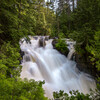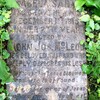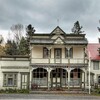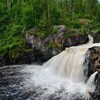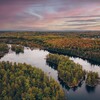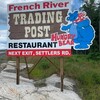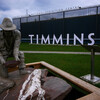
Ontario's Most Historic Town

Awhile back, TVO’s popular Studio Two TV show tried to determine Ontario's most historic town. Amid more recognizable entries such as Kingston and Niagara on the Lake, the winner came as a bit of a suprise to most. Ontario's most historic town? Turns out it's a largely forgotten Northeastern Ontario mining boomtown, Cobalt.
A silver rush town
There was a time however, when the name “Cobalt” resonated around the world. In 1903, two timber scouts for the Temiskaming and Northern Ontario Railway came upon some unusual rocks with a strange lustre to them. The provincial assayer in North Bay determined that they were an incredibly rich deposit of silver. And so, as in the Klondike only a few years earlier, the rush was on. Those timber scouts, J.H.McKinley and Ernest Darragh, not surprisingly turned their attention to prospecting and claimed what became one the silver fields’ richest mines. As exploration progressed, prospectors unearthed silver pieces said to be as large as stove lids.
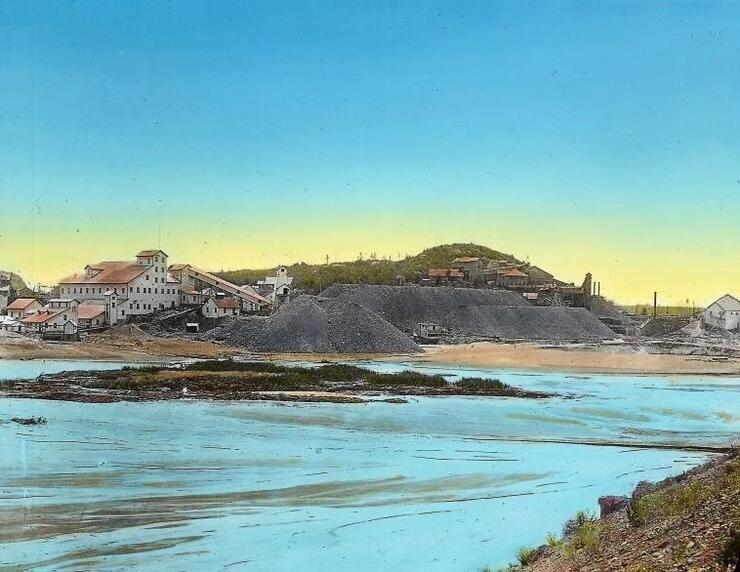
Silver seekers tumbled off the trains, stakes were pounded into the ground, headframes sprouted from the forests and an improbable town grew on the rocky ridges. By 1910, Cobalt had boomed to 10,000 people. A new brick station, the finest in the northeast, welcomed arrivals while more than 50 mines clattered away, some in the middle of the town itself. Silver Street and Lang Street boasted a row of hastily built wooden boomtown buildings more than 3 km. Long, but simple wooden houses stood helter skelter on the rock ridges.
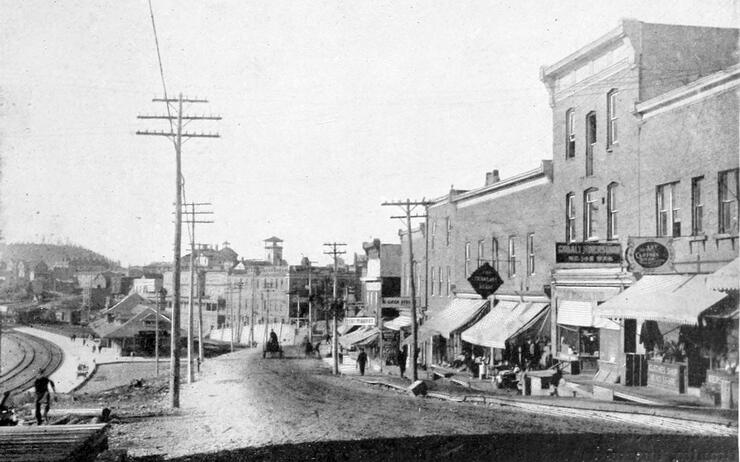
From Boom to Bust and back again
Sadly, every boom has a bust and by 1930, depleted deposits and plunging silver prices closed most of the mines, turning Cobalt into a near ghost town. But in its prime, the town was pivotal in making Ontario a mining super-power. Over its boom years, the mines of Cobalt yielded more than 420 million ounces of silver.
In 2001, Cobalt earned the crown as Ontario’s “Most Historic Town” thanks to its impressive silver yield and remarkable boomtown landscape. Regrettably, much of its heritage townscape was lost over the years to devastating fires. In 1909 half of the 3-km main street succumbed to a raging fire, while in 1977 more than 140 homes were destroyed. But flames were not the town’s only nemesis.
In 1987, what appeared at first to be a small pothole appeared in the highway leading into town. The pothole quickly and mysteriously grew to consume the entire road and proved to be a collapsing mine shaft, for the town is underlain by abandoned shafts. Questions arose as to whether the entire town should be abandoned. Fortunately, after a multi-million-dollar repair job to the roadway, that proved unnecessary.
As nearby towns grew, Cobalt languished as a backwater with little new growth. Now, however, the town is capitalizing on its famous history, and Cobalt (also a Parks Canada National Historic Site) is seeing a resurgence as an lively, artsy place to live and to visit. Boomtown buildings still line the streets, while a forest of ghostly headframes rise above the tree tops in the silver fields around town, making it a fun place to visit today and learn some history.
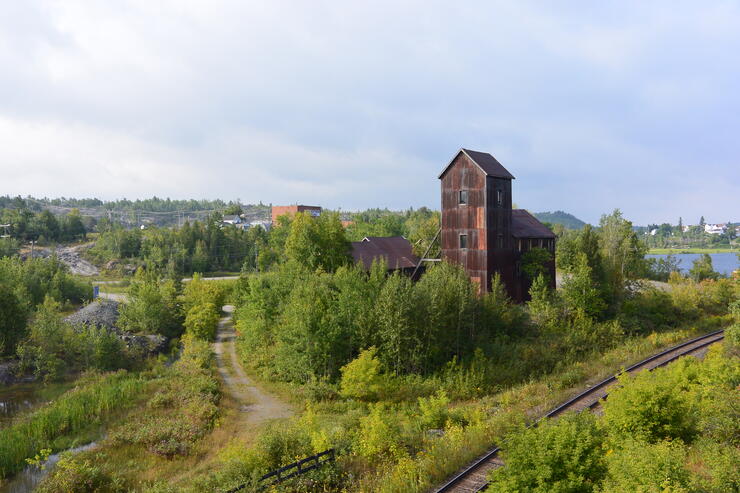
The historic headframe from a silver mine in Cobalt.
Celebrating the Past and looking to the future
Today the town celebrates that historic past. The Cobalt Mining Museum has created self-guided tours to the town’s streets and the many mine sites in the area. Fittingly, the two entrances to the town are guarded by rusting headframes, along with the legendary log blacksmith shop where blacksmith Fred Larose threw his hammer at a pesky fox, exposing one of the field’s richest silver deposits. The walking tour passes the fireproof former Exchange Hotel, the Coniagas Headframe which an enterprising grocery store owner used to cool his produce, the the Classic Theatre, a tribute to the mining men and women, and the elegant brick former railway station that once welcomed prospectors by the thousands.

Bruce Lonsdale Memorial Park and former railway depot in Cobalt.
Amid the hills are the Nipissing 69 mine, the “silver sidewalk,” and 19 different mining locations, most sporting interpretive trails. Although fires and demolitions have claimed many early boomtown buildings, Cobalt’s streets and hills yet yield a heritage treasure trove of buildings and scenes that are unlike anything else you're likely to see in Ontario. Stop at the Silver Cafe for some lunch or head to Cobalt Miner's Tavern for some local brews and a bite–you may even catch a live show. The historic tavern has hosted many of Canada's top acts over the years. The downtown's historic district is also home to Laura's Art Shoppe and the Silver Moccassin where you can pick up some local art as well as White Mountain Publications–probably the only bookstore in the world located inside an old mining headframe.
What does the future hold for Cobalt? It may be the key to the success of the world's electric car industry–a new cobalt refinery (used in the manufacture of electric car batteries) is set to open here sometime in 2021.
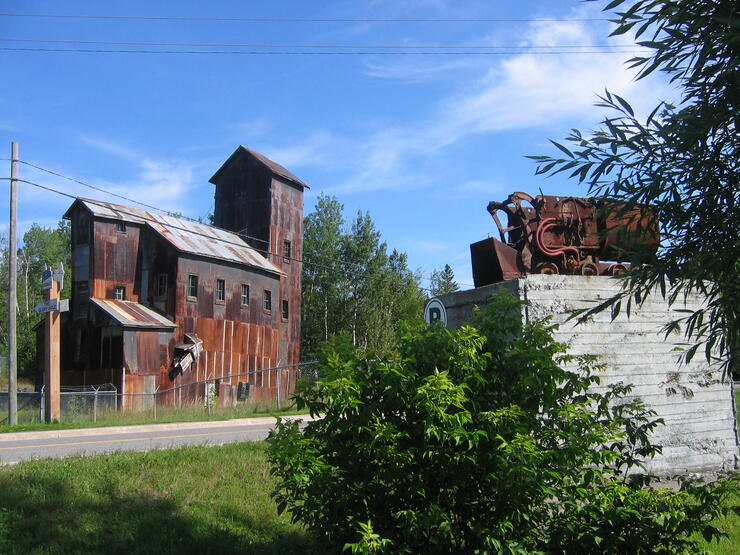
Cobalt welcomes you to explore its historic town centre.
Cobalt is truly a historic Ontario town. Is it the most historic in Ontario? Come for a visit to beautiful Cobalt and decide for yourself!
Recommended Articles
The Seven's Best Hikes, Biking Trails and Lakes

7 Best Spots to Check Out in The Seven

Budget Bliss: Explore Northeastern Ontario Without Breaking the Bank

Bring Your Fam!

Time to Unwind: 6 Spa Havens to Discover In The Seven
5 Amazing Places to SUP in Northeastern Ontario

5 Amazing Bike Rides to Discover

Northern Lights in Northeastern Ontario

Northeastern Ontario's Best Pride Festivals

Fish for one of the World's Rarest Species of Trout

An Insider's Guide to Manitoulin Island

6 Small-Town Gems to Explore in Northeastern Ontario

11 Best Things to Do in Kapuskasing, Ontario











